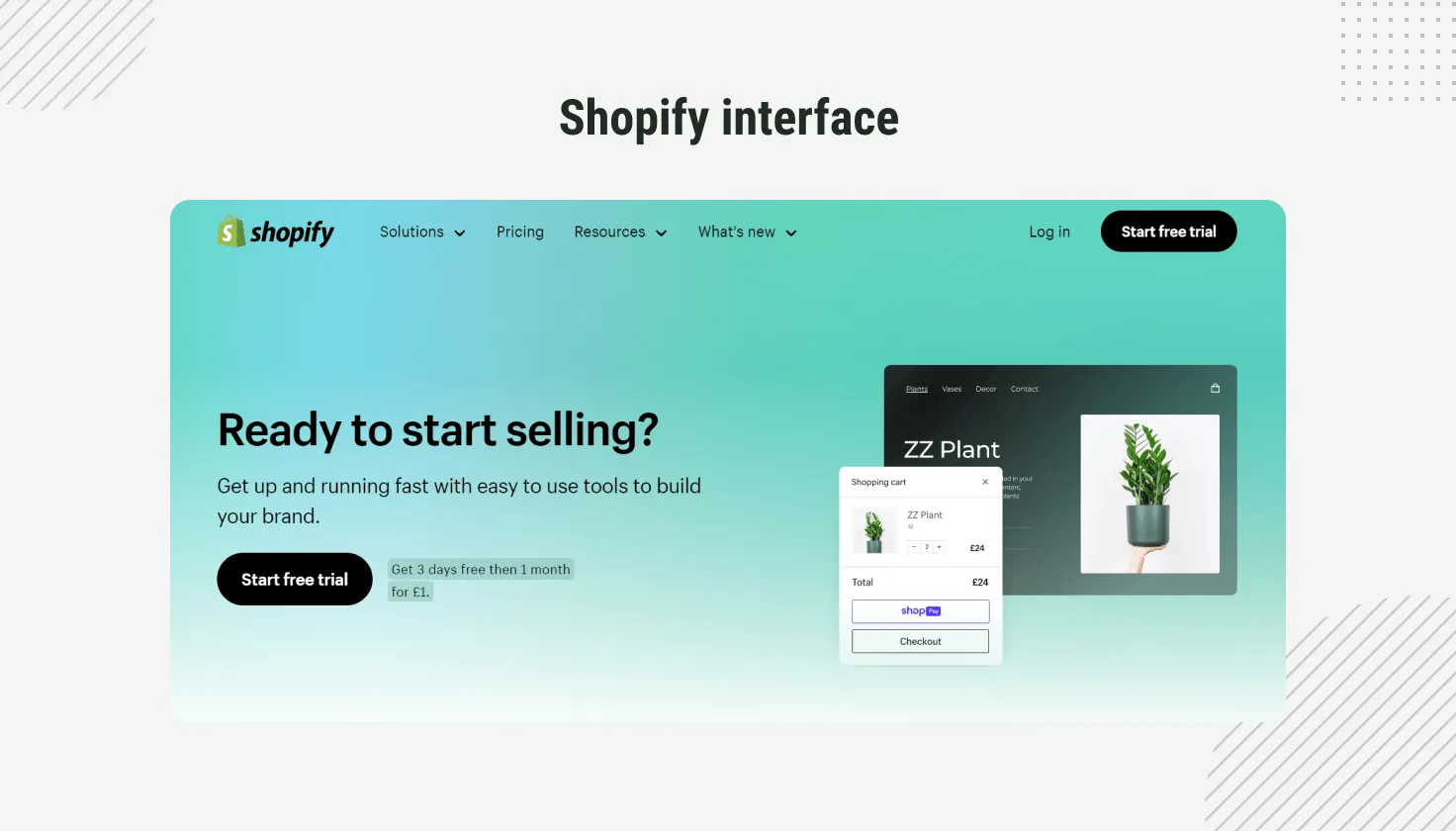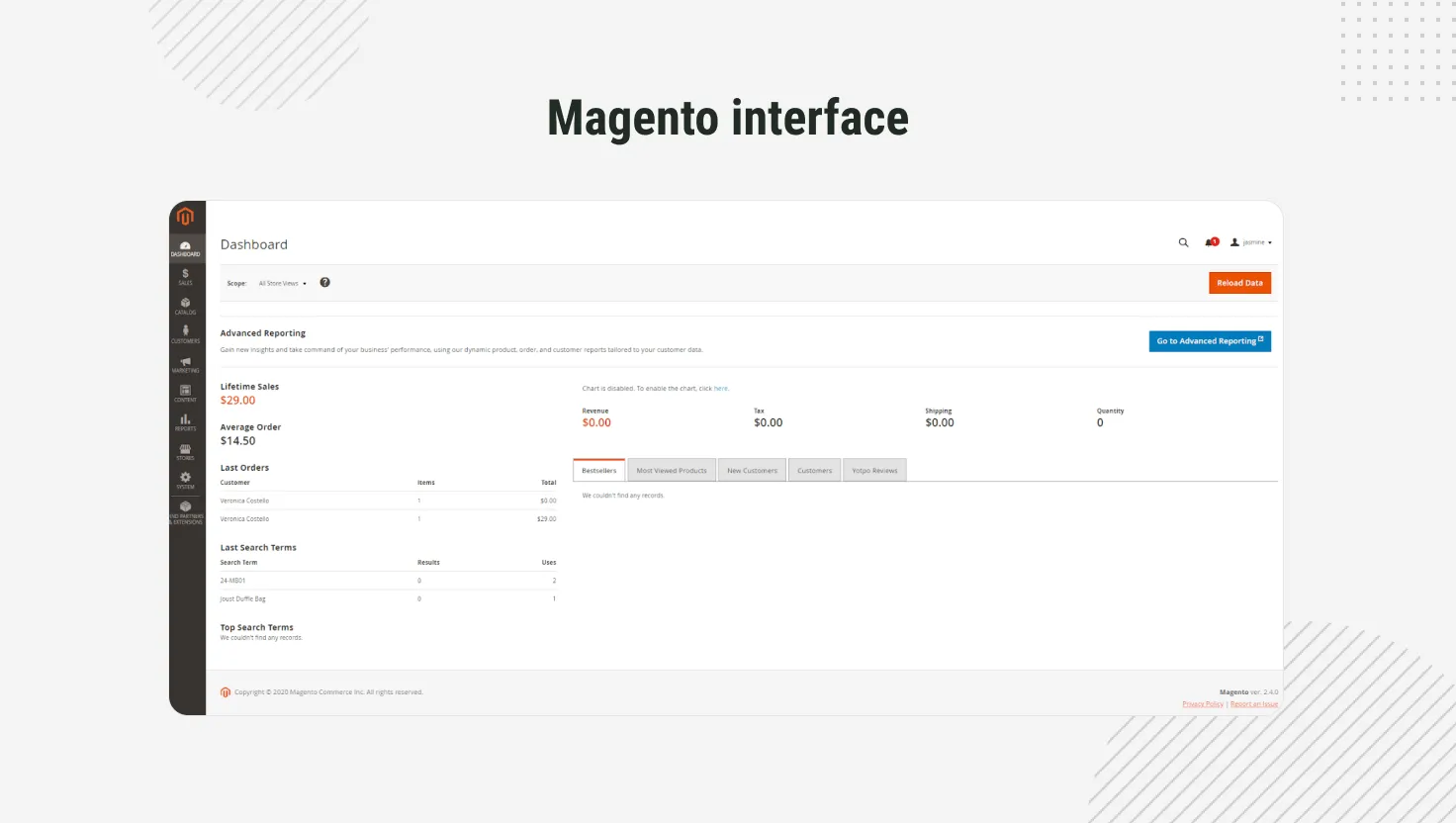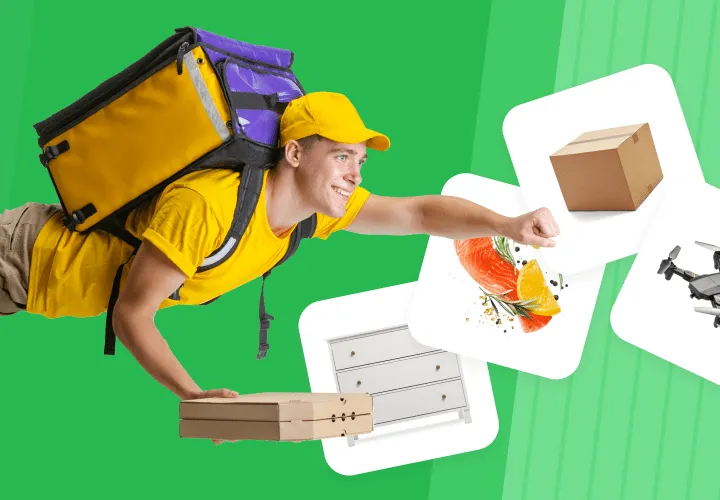Magento vs. Shopify: A Comprehensive Comparison
Table of contents
E-commerce continues to flourish, with global retail E-commerce sales projected to reach $8 trillion by 2027. To be competitive in this ever-expanding landscape, selecting the right platform is crucial for online businesses. Among the variety of options available, two giants stand out: Magento (Adobe Commerce) and Shopify.
Both platforms boast extensive user bases and offer customization options, facilitating seamless interactions with customers and optimizing business processes. However, choosing between them requires careful consideration of your specific needs. Delve into our comprehensive comparison of Shopify and Magento (Adobe Commerce) to determine the ideal platform for your online store.

Introduction to Shopify and Magento
Shopify and Magento stand as prominent figures in the realm of E-commerce platforms, catering to millions of businesses worldwide. Each platform offers a diverse array of features and functionalities aimed at facilitating the establishment of online stores.
Shopify distinguishes itself as a hosted platform, eliminating the need for users to concern themselves with website hosting. Its user-friendly interface, coupled with a drag-and-drop website builder, extensive theme library, and integrated payment processors, appeals particularly to small business owners and entrepreneurs seeking a straightforward and cost-effective solution for launching their online ventures.

In contrast, Magento operates as an open-source platform, necessitating users to manage their own website hosting. While inherently more complex than Shopify, Magento presents users with heightened flexibility and customization options. This complexity often attracts larger businesses and those with a demand for advanced features.

While Shopify emphasizes simplicity and accessibility, Magento positions itself as a robust solution tailored to businesses seeking greater customization and control over their online presence. Each platform serves a distinct segment of the E-commerce market, catering to varying needs and preferences among businesses of different sizes and scopes.
Features Comparison: Shopify vs. Magento
Now, let's take a closer look at what sets these platforms apart.
|
Shopify |
Magento |
|
|
Starting price |
$24 per month for a Basic plan |
0$ is the cost for Magento Open Source; Adobe Commerce pricing is custom and available upon request from the Magento sales team. |
|
Themes and design |
12 free and 174 paid themes |
3 free templates and 300+ paid templates |
|
Sales features |
Robust POS software, omnichannel processes, and localization options |
POS systems through extensions and integrated B2B functionality |
|
Marketing and SEO |
Built-in marketing dashboard and SEO tools |
400+ tools for advertising, email marketing, automation, CRM, and SEO |
|
Reporting and analytics |
Analytics pages, financial reports, and product analytics across all plans |
Analytics insights through Magento Reports Menu and personalized dashboards |
|
Payments |
Integration with various payment gateways |
Over 300 payment extensions, including popular options like PayPal and Stripe |
|
Apps and plugins |
8,000+ apps at the Shopify App Store |
3,600+ native integrations available via Adobe Commerce Marketplace |
|
Security |
SSL encryption, two-factor authentication, and fraud protection |
SSL encryption, two-factor authentication, and PCI compliance |
|
Customer support |
24/7 email and live chat support on all Shopify plans |
Magento offers 24/7 access to live chat, support tickets, a knowledge base, and forums for assistance |
Pricing: Shopify vs. Magento
Shopify's pricing varies depending on the plan, catering to businesses of different sizes and needs. The Basic plan costs $24 per month and includes limited features with two staff accounts, while the Advanced plan, priced at $299 per month, offers more extensive features and supports up to 15 staff accounts. Transaction fees for online credit card processing also differ between plans.
Magento presents users with two versions: Magento Open Source and Adobe Commerce. Magento Open Source, being free, offers a limited array of features. However, Adobe Commerce's pricing structure is not openly disclosed; instead, prospective users are required to submit their contact information and await a customized quote from a sales representative.
Design and themes
Shopify offers a selection of 12 themes, comprising both free and premium options priced from $180 to $360. Users can filter themes based on industry, catalog size, and desired features to streamline their search process. Each template includes theme settings, allowing for easy customization such as adding banners or altering colors without the need for HTML or CSS knowledge.
In contrast, Magento prioritizes flexibility and customization, providing users with a drag-and-drop builder and nine free design themes. Addtionally, a seamless personalization editor enhances customization capabilities.
With a plethora of plugins and add-ons, users have extensive control over every aspect of their website, from building landing pages to managing inventory and scaling their online presence. Magento's customer segmentation feature enables tailored content display based on factors like customer address, shopping cart contents, and order history, while its product recommendation feature utilizes shopper behavior and product features to suggest relevant products.
Sales features
Shopify provides robust POS software with inventory tracking, unified analytics, and staff management. It offers omnichannel processes like local pickup, delivery, BOPIS, and curbside pickup, along with a discounted POS kit. International merchants can localize stores by translating into multiple languages, converting prices, and configuring local payments.
Magento (Adobe Commerce) offers POS systems via extensions. Catering to enterprises, it integrates B2B functionality for managing company accounts, curated catalogs, and purchase orders or quote requests from buyers.
Marketing and SEO
Magento relies on its extensive library of extensions for marketing, offering over 400 options for advertising, email marketing, automation, CRM, and SEO/SEM. Integration may require technical expertise or developer assistance.
Shopify offers a built-in marketing dashboard with KPIs, automation tools, and top marketing channels. Users can improve SEO by adding keywords, optimizing site structure, and submitting sitemaps. Additionally, Shopify enables seamless integration with Facebook, Instagram by Meta, and the Google Merchant Center for expanded reach across social and search platforms.
Analytics and reporting
Both Shopify and Magento prioritize providing robust reporting and analytics features to aid businesses in making informed decisions.
Shopify offers analytics pages, financial reports, and product analytics across all plans, with more advanced plans granting access to orders, sales, and customer reports. Integration with Google Analytics 4 is also available for comprehensive data tracking, including visitor monitoring, customer behavior analysis, and session tracking.
In contrast, Magento offers powerful insights through its Reports Menu, allowing users to access various reports on sales, products, customers, and promotions. Activating a Business Intelligence account provides access to a personalized dashboard featuring approximately 70 customizable reports tailored to specific business needs. The Advanced Reporting dashboard showcases dynamic reports, intuitive data visualizations, and comprehensive data-rich dashboards.
Payments
Shopify Payments streamlines online transactions by enabling merchants to accept payments without third-party payment providers, although transaction fees apply. Rates vary based on the Shopify plan:
- Basic: 2.9% + 30 cents per online transaction; 2.7% for in-person transactions.
- Shopify: 2.6% + 30 cents per online transaction; 2.5% for in-person transactions.
- Advanced: 2.4% + 30 cents per online transaction; 2.4% for in-person transactions.
In contrast, Magento lacks a native payment gateway but offers over 300 payment extensions, including popular options like PayPal, Stripe, and Amazon Payments. Transaction fees vary depending on the chosen payment processor.
Both platforms support payment gateways like Amazon Pay, Stripe, and PayPal, but transaction fees apply.
Apps and plugins
Both Shopify and Magento boast extensive libraries of apps and plugins to enhance the functionality of online stores. While Shopify features a comprehensive app store, Magento offers a diverse array of third-party integrations.
In Shopify's App Store, users can find 8,000+ apps catering to various aspects of E-commerce, including inventory management, marketing, order processing, store design, and customer support. The platform seamlessly integrates with popular third-party platforms across social media channels like Pinterest and TikTok, email marketing tools such as Mailchimp and Klaviyo, shipping carriers like UPS, and accounting software like QuickBooks and Xero.
Magento's marketplace offers both free and paid extensions spanning accounting, customer support, marketing, and sales functionalities. The platform's open-source nature allows for extensive customization and the development of custom integrations. This flexibility empowers developers to create tailored integrations that precisely meet the unique requirements of businesses. Additionally, you can turn to Magento development company to get the level of customization your business needs.
Security
Both Shopify and Magento prioritize the security of businesses and their customers, implementing various measures to safeguard against threats.
Shopify employs secure socket layer (SSL) encryption to protect customer information, complemented by two-factor authentication and fraud protection mechanisms. Similarly, Magento utilizes SSL encryption, two-factor authentication, and PCI compliance standards to enhance security measures.
Support
Shopify offers extensive customer support via phone, email, and live chat, along with resources like Shopify Academy and Merchant Success Program (for Shopify Plus users). Additionally, helpful tutorials and a wide range of third-party apps are available. Magento users can open support tickets, monitor ticket status, and contact the support team. The Adobe Commerce Help Center provides extensive user guides, support tools, forums, and developer documentation.
Magento or Shopify 一 Which One to Choose?
Shopify offers an intuitive interface with drag-and-drop functionality, catering to users without coding skills. Its extensive theme library and built-in payment processors streamline the creation and management of online stores. Coupled with 24/7 customer support and a robust app store, Shopify provides a user-friendly solution for businesses of all sizes.
However, Shopify's limitations include restricted inventory and fulfillment options, especially for larger enterprises. Customization options are somewhat limited, and international selling capabilities may be constrained. Larger businesses may find the platform insufficient unless opting for the enterprise plan or leveraging Shopify web development services.
Magento stands out for its high level of customization, comprehensive inventory management, and strong international selling capabilities. With extensive control over the platform and powerful content management features, Magento caters to a wide range of businesses. Yet, Magento's self-hosted nature adds complexity to setup and maintenance, requiring technical expertise. If still in doubt about choosing Magento, you can turn to a professional Magento consulting company to explore if Magento is the right choice for your business.
If you're still deliberating about which platform to choose or need assistance with setup, remember that Emerline is here to help. Our E-commerce team will analyze your business needs and recommend the best solution tailored to your requirements.
More from Emerline
Emerline's experts continually evaluate a variety of E-commerce solutions to ensure you find the one that best suits your business needs. Explore our in-depth articles packed with detailed insights to help you make an informed decision with confidence:
Updated on Jun 18, 2024





